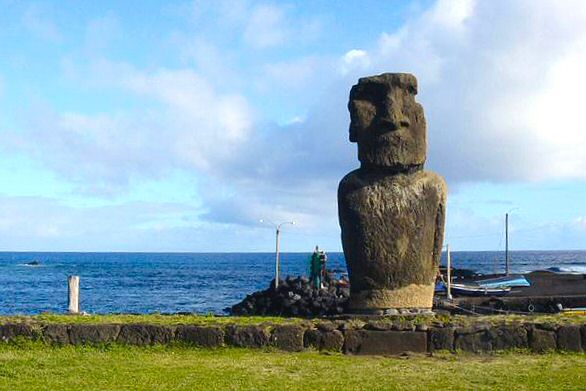 One of the coolest things about science is it can take you just about anywhere. The science blogosphere is taking us around the world today – we’re visiting…
One of the coolest things about science is it can take you just about anywhere. The science blogosphere is taking us around the world today – we’re visiting…
The silent coasts of Easter Island. It’s been called the world’s most remote inhabited place. This island can be reached via a five-hour plane ride from Santiago, Chile. It’s home to about 5,000 people and at least that many horses. Brian Wee visited the island and took note of its fragile ecosphere – the place is not much bigger than ten square miles, and it’s really hard to sustain a lot of human life so far away from everything else.
The mountains of Mongolia. Columbia University’s Neil Pederson is part of a diverse group of scientists heading to this vast, magnificent country to, as he calls it, “chase Ghengis Khan.” The legendary character known for his charisma and conquests is symbolic of all the scientific and historic mysteries about the time and place of his prominence. What factors led to the creation of the largest land empire in human history? Were there major climate shifts that drove people east? Were there economic problems? Or was it just the sheer will of one amazing leader? Nobody knows for sure what the scientists will find, but it’s gonna be a heck of a story.
The Crozet Archipelago. There’s a research base on a small island in the Indian Ocean, not all that far from the South Pole. The people there study penguins, among other things. Recently they observed something pretty cool – the penguins that see them every day act somewhat differently than the penguins that don’t. Specifically, the penguins living closer to people don’t seem to mind loud noises as much. (That’s “city livin” for ya.)
Under the water off the coast of Mexico. One of the hardest parts about studying landslides is you’re not always there when they happen. Now think about how hard it is to be there when you study underwater landslides. So I’m thinking the scuba diver who caught this underwater landslide on video is a pretty popular person right now with geologists.

